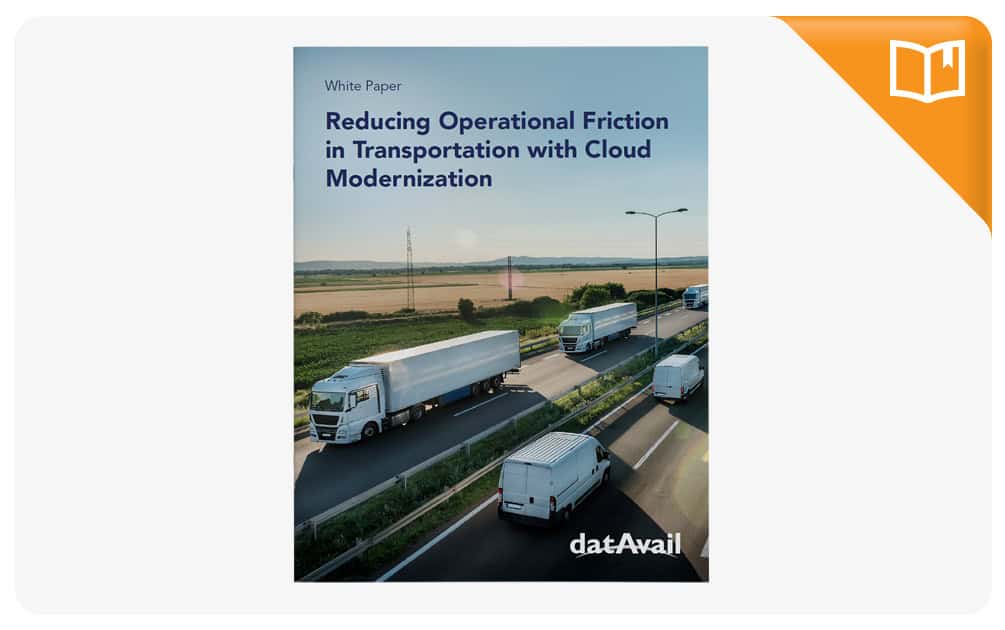Legacy Technology: Update. Regenerate. Modernize.
Author: Tom Hoblitzell | 7 min read | June 2, 2022
In the technology universe, the concept of ‘modern’ – something that is ‘not antiquated or obsolete‘ – applies to digital systems that actively engage with today’s highly sophisticated, globally based cloud and Internet-facilitated programming. Companies that have modernized some or all of their technology now enjoy a decided market edge over their less forward-thinking competition.
Those organizations that have not made the upgrade often cite a laundry list of reasons why the process isn’t right for them (“Not right now.” “Not in this fiscal year.” “Not seeing the value.”) What they’re really not seeing, however, is the significant and positive long-term impact a modernized infrastructure can have on their bottom line.
Facing the Challenges of Legacy Systems
Retaining legacy assets ‘because it’s too expensive to replace them’ is no longer a valid reason to avoid a technology modernization project. The reality is that the legacy system itself is running up unnecessary CAPEX and OPEX numbers. Companies operating without the streamlining organization and support of a modernized system end up paying more for those legacy assets over time while receiving less value for those investments:
- Siloed or partitioned departments within systems usually don’t ‘talk’ to each other in a legacy configuration, so organizations don’t know or can’t see the full scope of their operations or the impact one department has on another. Without that data, leaders don’t have the tools to make changes when sales are down, or customer complaints are up.
- Monolithic infrastructures are limiting, too. In older systems, any single change often requires a rewrite of the entire system and sometimes also the systems within which it works. Retooling an entire corporate segment takes time and expense. The required downtime for repairs and reloading adds even more costs to the problem.
- The complexity of monolithic programming also limits the number of people qualified to maintain and repair it. In older organizations, the IT team has been installing, reprogramming, tweaking, and fixing the system sometimes for years. Only they, and those they directly train, can understand all the nuances of the existing conglomerate, and when they leave, so does their knowledge of how the company works.
Companies that continue to rely on legacy technology face these and a growing list of expensive challenges in the future as their modernized competition reconfigures their rapidly modernizing industries.
Embracing the Value of the Modernized System
Rather than running apps in siloed, self-contained on-prem servers, the ‘modernized’ organization runs its business in hybrid (a combination of on-prem and cloud services) or fully cloud-based systems to capture all the resources now available through those digital portals.
Companies that have modernized their infrastructure, apps, and configurations have eliminated those prior challenges:
- Centralized, homogenized data is accessible to all business units, so each has the information they need to work. The C-Suite can see the progress occurring across the enterprise.
- Cloud-based microservices eliminate the requirement of the whole-system-overhaul to make changes. Instead, the modernized entity has its individual services bundled into a chain of small apps, ‘microservices,’ each of which performs a single function. When that unique function fails or doesn’t apply to the process, just the single service needs replacing, which can usually be accomplished in mere minutes, so there’s almost no disruption or downtime involved.
- Modernized companies build their systems across many levels, using tools and techniques known by most industry professionals. Since the architecture and infrastructure are not proprietary, any well-trained IT professional can perform needed monitoring, repairs, and reprogramming services.
Instead, these innovative enterprises are gaining benefits that were not possible using legacy technology:
- Rather than focusing on maintaining their underlying infrastructure assets, these organizations use their modernized IT resources to support and innovate the proprietary apps that perform their core corporate functions. Accessing the central data repository keeps leaders at all levels informed about company activities across its whole landscape. When data reveals concerns in any department, the modernized system is already programmed to issue alerts, and analytics can suggest where the problem lies and how to address it.
- A hybrid configuration also preserves what value their legacy tech still retains. Many companies have apps, data, and other assets that continue to provide value but don’t require or shouldn’t be exposed to a cloud conversion. Keeping them active while maximizing their resource with cloud supports extends their life and prolongs the value of their investment. When those on-prem assets have finally exhausted their usefulness, cloud assets can both assist with the sunsetting process while also facilitating a smooth and appropriate transition to the next iteration of that function.
- The pricing strategy for cloud computing is also a significant factor for those who’ve made the switch. Unlike on-prem systems that require (usually) significant CAPEX investments in hardware and software to both initiate and run, the modernized system uses infrastructure and platforms as services, which moves their costs to the OPEX sheet and makes them more easily managed as monthly expenses. Additionally, cloud services providers usually charge for these services by usage volume, so the enterprise isn’t paying for access to services it isn’t using or doesn’t use.
Not least important to the legacy-versus-modernized conversation are the immense business values available through the modernized elements of a cloud or hybrid computing system. These assets adapt to almost any configuration to fulfill practically any demand. They are scalable, so replication is easy and assured. They are agile, so they can modify to suit new circumstances or whole new market opportunities. By all reports, the modernized enterprise has set the stage for a bright future because its infrastructure can adapt to whatever the markets throw at it.
Have you checked out what the process of modernizing your organization might look like? Ask the Datavail modernization experts to help you get started.
For a real-life example of how a major P&C insurance company modernized their data and analytics strategy, download, “How a P&C Insurance Company Modernized its Unwieldy Data Management Strategy.”


